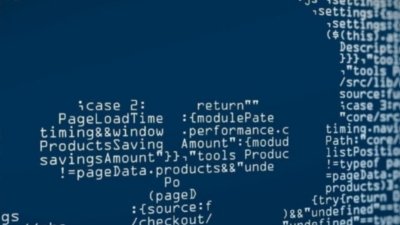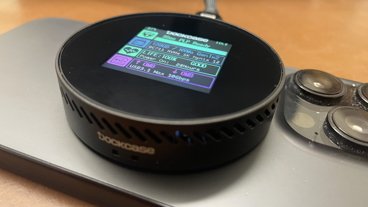A report this week from noted Apple analyst Neil Cybart relates an increase in the company's massive research and development outlays suggest something big is in the works, but an industry insider says it's just business as usual.
In a post to his blog Above Avalon, Cybart on Wednesday concluded Apple's R&D spending, which stood at $2.51 billion or 5 percent of net sales for the March quarter, assumes the company will make its "largest pivot yet." In particular, Cybart makes the case that Apple's more than $10 billion in yearly R&D spend presages Apple Car.
On Thursday, former Windows chief turned A16z investment counsel Steven Sinofsky offered a counter argument, saying Cybart's conclusory post is a "dangerous attempt at curve fitting/correlation [does not imply] causation."
Over the course of an 11-part tweet storm, Sinofsky dismantled the idea of a near term pivot away from iPhone. The most cogent argument relates to the purported auto product's time horizon, or the time it will take to develop and ramp up to production.
One of Cybart's main contentions revolves around quarterly expense growth, which has ballooned dramatically over the past few years. Specifically, a pattern of sudden increases in spending can be tied to major product launches like iPhone, Apple Watch and now Project Titan, Cybart asserts.
"There are only a handful of logical explanations for Apple's current R&D expense trajectory, and all of them result in a radically different Apple. In a few years, we are no longer going to refer to Apple as the iPhone company," Cybart writes.
The question is whether such increases are in fact evidence of a pivot, or an inevitable byproduct of corporate growth.
For large companies like Apple, product breakthroughs "often take almost immaterial amounts of R&D spend," Sinfosky said, adding that current revenue is driven by previous R&D expense that might date back decades. Taking that notion a step further, the former Microsoft exec said it's difficult to reduce R&D outlays tied to successful products (iPhone), but increasing spend to maintain the same is "incredibly easy." For example, the features Apple adds to iPhone each refresh cycle needs to keep up with that platform's growth.
Cybart got in on the friendly Twitter discussion, telling Sinofsky that the original thesis was not based on R&D as function of revenue, but on absolute growth. He also argued that a majority of iPhone development likely took place in a span of three to five years. The Above Avalon post clearly classifies Project Titan as a long-term pivot, one Cybart believes will be incredibly important to Apple's overarching structure.
"I don't consider Titan to be just another project that Apple has been tinkering around with in the lab for years like an Apple television set or Apple Pencil," Cybart writes. "Instead, Project Titan is much more about building a foundation for Apple that will literally represent the company's future."
Whether a tech company with no prior experience in automotive can pivot to the heavy industry in such a short span, and on comparatively limited investment, remains unclear.
AppleInsider noted the uptick in R&D spending last month, but found the increase in line with historical company trends. Spend as a function of net sales is up two percent from Apple's average, but Sinofsky implies such shifts are inevitable.
"Maybe something big will happen or maybe not," Sinofsky said. "But it will be a coincidence either way."
 Mikey Campbell
Mikey Campbell














 Thomas Sibilly
Thomas Sibilly
 Christine McKee
Christine McKee
 William Gallagher
William Gallagher

 Malcolm Owen
Malcolm Owen
 Wesley Hilliard
Wesley Hilliard










10 Comments
Ten years for the iPhone?
Next wasn't even bought at that stage. Then they had to build OS X.
There's no debate to be had. Apple are building a car.
The innovation will be a home button that actually takes you home
Apple is probably going to make an Apple Car or more likely a media/entertainment/navigation interface or console at some point.
Apple is investing huge amounts in R&D as well. To move away from just being the iPhone company.
But the real target of these investments is not a new product. The target of these investments is to reposition Apple as a services company. Where the iPhone, the iPad, Apple TV and Apple Watch are simply the channels you can use to enter and access these services.
In 5 years time, the profits from hardware sales will be high - but will pale in comparison to Apple's services business profits. Apple will probably cut entry prices for its products significantly - and start focusing on volumes.
Till today, Apple was selling all the phones it could possibly make - so there wasn't any need to cut prices. Now the game has changed, and Apple's strategy also will change. Launching the iPhone SE at the lowest ever price point for a phone is just the first shot from the Apple bow.
Remember one thing - Tim Cook is a logistics guy. He isn't an ideas or innovation or products guy. His biggest contribution is to streamline logistics to such a ridiculous extent that Apple can sell huge volumes and make big margins.